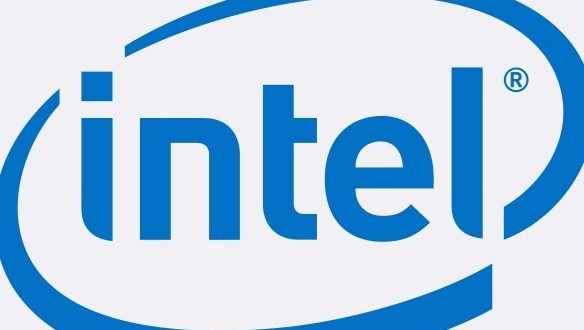By Raja Koduri
Senior Vice President
Chief Architect
General Manager, Intel Architecture, Graphics and Software
At Intel, we truly believe in the potential of technology to enrich lives and
change the world. This has been a guiding principle since the company was
founded. It started with the PC era, when technology enabled the mass
digitization of knowledge and networking, bringing 1 billion people onto the
internet. Then came the mobile and cloud era, a disruption that changed the
way we live. We now have over 10 billion devices connected to
supercomputers in the cloud.
We believe the next era will be the intelligentera. An era where we will
experience 100 billion intelligent connected devices. Exascale performance
and architecturewill make this intelligence available to all, enriching our lives
in more ways than we can imagine today. This is a future that inspires and
motivates me and my fellow Intel architects every day.
More:Architecture Day 2020 (Press Kit)
We are generating data at a faster rate than our current ability to analyze,
understand, transmit, secure and reconstruct it in realtime. Analyzing a ton of data requires a ton of compute. More important, for this data to help us with
insights, it needs access to compute in realtime, which means low-latency, close to the user. At Intel, we are on a journey to solve this exponentially hard
problem.
Since the end of the Dennard scaling era, extracting the exponential value
from transistor technology inspired us to look atnew approaches across the whole stack. This led us to what we call our Six Pillars of Technology
Innovation, which we introduced at our Architecture Day in December 2018.We believe that delivering advances across these pillars is necessary to
continue the exponential essence of Moore’s Law.
This week, at Architecture Day 2020, we showcased how we are taking this
forward with a broad range ofexciting new breakthroughs. We have made great progress with our diverse mix of scalar, vector, matrix and spatial
architectures – designedwith state-of-the-art process technology, fed by disruptive memory hierarchies, integrated into systems with advanced
packaging, deployed at hyperscale with lightspeed interconnect links, unified by a single software abstraction, and developed with benchmark defining
security features.
You can watch all of the Architecture Day 2020presentations in the event
press kit, but let me underscore some of the highlights.
We provided more details about our disaggregated design methodology and
our advanced packaging roadmap. We demonstrated our mastering of fine bump pitches in EMIB and Foveros technologies through several product
iterations in graphics and FPGAs, and on the client with Lakefield.
We also shared one of the most exciting advancements in our transistor
roadmap by introducing our new 10nm SuperFin technology, a redefinition of the FinFET with new SuperMIM capacitors that enables thelargest single,
intranode enhancement in Intel’s history, delivering performance improvements comparable to a full-node transition and enabling a leadership
product roadmap.
When we integrate our next-generation Willow Cove CPU architecture with
our 10nm SuperFin technology, the result is the incredible new Tiger Lake platform. We unpacked details of the upcoming Tiger Lakesystem-on-chip
architecture, which provides a generational leap in CPU performance, leadership graphics, leadership artificial intelligence (AI), more memory
bandwidth, additional security features, better display, better video and more. I know everyone is eager for all of the details on Tiger Lake and we look
forward to sharing more in the coming weeks.
In addition to Tiger Lake, we provided a deepdive into our next generation
Intel® Agilex™ FPGA, which provides breakthrough performance per watt. In fact, we showcased two generations of disaggregated products using EMIB
and shared the first results of our 224Gbps transceivers.
We also highlighted how Intel’s Xe GPU architecture is the foundation that
helps us build GPUs that are scalablefrom teraflops to petaflops.Xe-LP powers leadership graphics in Tiger Lakeand is our most efficient microarchitecture
for PC and mobile computing platforms. Xe-LP alsopowers our first discrete GPU in more than 20 years, codenamed DG1.This GPU is now in production.
We also introduced the first Intel® server GPU, powered by Xe-LP. This GPU will ship later this year and deliver class-leading stream density and visual
quality for media transcode and streaming.
On the datacenter front, we announced that our first Xe-HP chipis sampling to
customers. Xe-HP is the industry’s firstmultitiled, highly scalable, high-performance GPU architecture, providing petaflop-scale AI performance and
rack-level media performance in a single package based on our EMIB technology.Xe-HP will leverage enhanced SuperFin technology.
And, ourenthusiast and gamer friends, we heard your requests for Xe for
enthusiast gaming.We added a fourth microarchitectureto the Xe family:Xe-HPG optimized for gaming, with many new graphics features including ray
tracing support. We expect to ship this microarchitecture in 2021 and I can’t wait to get my hands on this GPU!
On software, we have talked before about our vision for providing developers
a unified, standards-based programming model across all our XPU architectures. We are executingon that vision with ouroneAPI Gold release
available later this year.We also announced that we are offering DG1 early access to developers in Intel® DevCloud, enabling them start developing with
oneAPI without need for any setups, downloads and hardware installs.
Since our last Architecture Day, we have made some big steps in memory.
Most recently, as part of the 3rd Gen Intel® Xeon® Scalable processor launch (code-named “Cooper Lake”), we announced our 2nd Gen Intel®Optane™
persistent memory product (code-named “Barlow Pass”). We also remain on track to move Intel’s 4-bit-per-cell QLC into production by the end of 2020.
We also took a deeper look at how we are advancing security amid a
constantly evolving threat landscape. This includes the introduction of new technologies, such Intel® Control-Flow Enforcement Technology, which
delivers CPU-level security structures to help protect against common
malware attack methods. And, we gave the first look at our longer-term vision
around foundational security, workload protection and software reliability.
We have made major progress in advancing interconnect, too. Intel
announced in March 2019 that it was working with the industry for broad support for Compute Express Link, designed to accelerate next-generation
data center performance and to be offered in Sapphire Rapids. We have also had a significant lead with silicon photonics in terms of customer
engagements, and as the datacenter continues its transformation, Intel is addressing their needs through leadership speeds and foundational and
SmartNIC products for network processing offloads.
Our Intel fellows and architects are passionately working on technology for
2021, 2022 and beyond. We provided a glimpse into our product vision for client and data center leveraging for all six pillars and disaggregated design.
Our head of Intel Labs also provided a look at where emerging research areas can get us 100x to 1000x improvements in compute efficiency, including a
sneak peek at neuromorphic architectures being researched in ourworld-leading labs.
For decades, Intel has been at the center of the technology industry. Our
products, along with those of our customers, have reshaped the way we all
work, live and play. But our collective journey is far from over. I believe we
are at the start of a new era, an intelligent era, an exascale for everyoneera.
This era will be powered by unprecedented levels of compute performance
and disruptions across all Six Pillars of Technology Innovation.
Raja M. Koduri is senior vice president, chief architect, and general manager
of Architecture, Graphics, and Software at Intel Corporation.
 التكنولوجيا وأخبارها بوابة مصر لأخبار تكنولوجيا المعلومات والإتصالات
التكنولوجيا وأخبارها بوابة مصر لأخبار تكنولوجيا المعلومات والإتصالات







